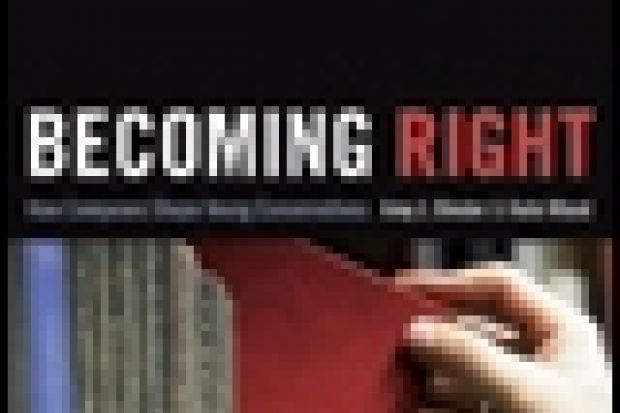It is impossible to generalise about the political attitudes and activities of students across all of US higher education: the terrain is far too diverse, with religiously affiliated colleges of a few hundred at one end of the spectrum and Miami Dade Community College with 175,000 students at the other. Amy Binder and Kate Wood confine themselves to exploring the conservative political culture at two universities at near-opposite poles of the system: “Eastern Elite”, a private, highly selective and well-heeled outfit on the one hand, and “Western Flagship”, the top institution in a state system encompassing state universities and community colleges on the other. Unlike Eastern Elite, it provides little personal contact between students and academics, offers few small classes, manages students’ academic lives through an impersonal and inflexible bureaucracy, and (like all public higher education) is short of cash.
The authors set out to discover the ways in which these very different settings foster different styles of political activism, encourage different political ambitions, and inculcate different conceptions of what it means to be a conservative. To understand the exercise, non-Americans may need to step back a few paces. US conservatives devoutly believe that higher education is ideologically biased in favour of liberalism. David Horowitz, the American conservative writer and policy advocate, spent years publishing lists of the “hundred most dangerous professors” in the US; during the recent Republican presidential primaries, candidates outdid themselves in denouncing the liberalism inculcated in higher education. Liberalism means being pro-choice, favouring same-sex marriage, accepting higher levels of taxation to provide welfare - essentially, the rag-bag of things that Democrats favour and Republicans don’t.
Factually, the belief that higher education is monolithically intoler-ant of any but liberal views is not rock-solid: Binder and Wood point out that more students profess to be “middle of the road” than are willing to call themselves liberal. Still, liberals certainly outnumber conservatives. Faculty allegiances vary by institution and discipline. Unsurprisingly, there are more conservatives in business schools than in departments of gender studies. One thing that alienates conservative students everywhere is the ham-fisted efforts of well-intentioned administrators to provide some elementary sex education, largely in the interests of avoiding unwanted pregnancies and sexually transmitted diseases, while usually attempting to inculcate tolerance for gays and lesbians, too. To a European eye, the administrators doing all this are conservative, paternalist and at worst inept. Nonetheless, conservative students arrive expecting to find themselves a beleaguered minority, and what Binder and Wood explore is the ways in which the students react to their environment or to their perceptions of it.
The most marked difference between Eastern Elite and Western Flagship reflects a divergence in the tactics of conservatives on the national political level. One approach is confrontational, taking the form of events such as a “catch an illegal alien day” that will lure committed liberals into behaving in angry ways that discredit them. The other is to avoid shouting matches and concentrate on persuading the persuadable that conservative ideas have much to be said for them. It comes as little surprise that the first is the preferred mode at Western Flagship and the second at Eastern Elite.
What comes as more of a surprise, as it seems to have done to the authors, is the important role played by national conservative organisations. Young America’s Foundation, for instance, is bankrolled by brothers Charles L. and David Koch, the Olin family and several other conservative foundations, and spends some $15 million (£9.4 million) a year teaching students how to put on controversial events and gain publicity for them. The students who benefit from this largesse seem naively touched by the attention they receive. Indeed, if the intellectual interest of this book is the demonstration of how much influence the kind of university has on its students’ political culture, a pleasure for the reader is the revelation of the sheer good nature of so many of the study’s interviewees; they come across as pretty muddled on many issues but astonishingly rarely as nasty.
Becoming Right: How Campuses Shape Young Conservatives
By Amy J. Binder and Kate Wood
Princeton University Press
422pp, £19.95
ISBN 9780691145372 and 9781400844876 (e-book)
Published 17 January 2013
Register to continue
Why register?
- Registration is free and only takes a moment
- Once registered, you can read 3 articles a month
- Sign up for our newsletter
Subscribe
Or subscribe for unlimited access to:
- Unlimited access to news, views, insights & reviews
- Digital editions
- Digital access to THE’s university and college rankings analysis
Already registered or a current subscriber? Login




